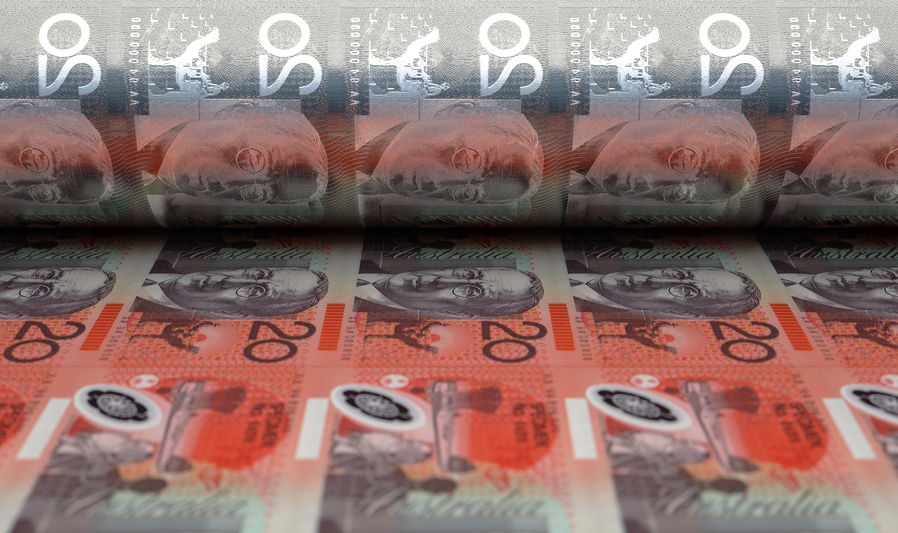Activity 9g [Extension]: Governments must beware the lure of free money?

- In simple terms, clubby Keynesianism refers to a period where governments around the world were thought the best way to both counter economic downturns and to promote longer term economic growth was for the government to use its budget to deliver economic stimulus. In contrast, austere monetarism was the reverse approach where the belief was that heavily government keynesian stimulus only served to reduce economic growth over time due to burdens imposed by government debt.
- The health pandemic caused policy makers around the world to focus less on austerity (e.g. spending responsibly or within certain parameters) and more to a focus more on supporting economies that were clearly entering periods of decline not seen since the great depression of the 1930s. The focus thereafter would be on containing any risks that evolved from both the huge levels of government debt and money printing that financed the stimulus programs.
- In Australia, the massive stimulus packages (in excess of $300 billion) provided by the federal government during 2020 resulted in a huge increase in the budget deficit (expected to exceed $200 billion in 2021) because government expenditure increased significantly relative to government revenue. The large increase in the deficit resulted in higher gross government debt (expected to rise above $850 billion in 2021) because the deficit was finance by the sale of CGSs (or government issued bonds) the stock of which in the economy equates to gross government debt.
- This is because cash that previously was not in circulation (i.e. the money held by the RBA) enters circulation once the RBA purchases the bonds from the private sector. Accordingly, it has the same effect as the RBA printing cash to facilitate the purchase of assets (e.g. bonds) in the economy – cash that was not previously in circulation.
- Growth in government debt will ordinarily increase (long term) interest rates because it reflects an increase in demand for money in financial markets. Like any market, an increase in demand will lead to a higher price, where the price of money is interest rates. It is also true that any increase in government debt via the sale of Commonwealth Government Securities, or bonds, decreases the price of the bond and increases the yield (interest rate) on the bond as there is always an inverse relationship between the price of a bond and its yield. The final effect on interest rates will largely depend on who purchases the bonds. If the bulk of the bonds are purchased by foreign investors and the RBA then it will have a muted effect on interest rates compared to if the bonds were purchased by domestic investors. This is because foreign funds entering the country, or RBA purchases of bonds, effectively add to the supply of money in financial markets, which therefore exert downward pressure on interest rates (hence the increase in supply of money works against the increased demand for money by the government). [See answer to next question in relation to the impact of RBA purchases of government bonds.]
- This is because governments are not concerned about the inflationary risks associated with printing money that otherwise would ordinarily exist. It means that the growth in budget deficits and government debt are less likely to be inflationary and RBA purchases of bonds (or quantitative easing/money printing) can ensure that policy stimulus can persist for longer with reduced risk of an inflationary breakout in the medium term.
- As noted by the Economist, low interest rates make it cheaper for the government to borrow to build new infrastructure, from research labs to electricity grids, that will boost growth and tackle threats such as pandemics and climate change. As societies age, rising spending on health and pensions is inevitable – if the resulting deficits help provide a necessary stimulus to the economy, all the more reason to embrace them as they help to lift living standards.
- Traditionally, governments have been loath to print excessive amounts of money because of the impact it can have on inflation and damage to the economy over time. In particular, printing money (or increasing the volume of money in the economy) at a rate that is much faster than the rate of economic growth will necessarily lead to an increase in prices if the economy is operating at or close to productive capacity. So while the current stimulus programs are feasable in light of global economies producing well below productive capacity, and with interest rates close to 0 (or even negative), continuing monetary stimulus into the future is expected to increase prices (inflation) once economic recoveries take hold and economies start to produce closer to their productive capacity.
- This is because the RBA has made it clear it will not reduce interest rates below 0 and that a cash rate (and medium term bond rates) of 0.1% is the effective lower bound. It is therefore not likely that the RBA would reduce the cash rate any further, meaning that any further stimulus that is required could not be achieved via traditional monetary policy responses. However, the RBA could further adopt non-conventional measures (e.g. quantitative easing/further long term bond purchases) as a means of reducing longer term rates of interest. But as these rates approach zero, it then makes it more difficult for money policy to gain any traction.
- It exposes government’s to the influence of lobbyists and other groups that potentially leads to ‘governments playing favourites’ (e.g. support to some workers/businesses/industries that have political influence) and ultimately leading to the increased likelihood of government failures.
